Better Business Writing
Course Length: 1 or 2 days
After completing this course, you will have the critical skills to improve your spelling, punctuation, usage and style, while avoiding the pitfalls of business writing, and creating persuasive and more effective memos and letters. Ten key techniques for effective communication will help you grow more confident in your ability to express yourself clearly. Good business writing is as important as ever. Being able to recognize and correct problems, avoid redundancies, and define your communication goals are all critical factors for effective business writing.
Part 1: Back to Basics
Part 2: Choosing Your Words Carefully
Part 3: Improving Your Business Writing
Part 4: Writing for Special Circumstances
Part 5: Know Your Audience
Business Writing
Course Length: ½, 1 or 2 days
Writing is a key method of communication for most people, and it’s one that many people struggle with. This workshop will give participants a refresher on basic writing concepts (such as spelling, grammar, and punctuation), and an overview of the most common business documents (such as proposals, reports, and agendas), giving you that extra edge in the workplace.
Module One: Getting Started
Module Two: Working with Words
Module Three: Constructing Sentences
Module Four: Creating Paragraphs
Module Five: Writing Meeting Agendas
Module Six: Writing E-mails
Module Seven: Writing Business Letters
Module Eight: Writing Proposals
Module Nine: Writing Reports
Module Ten: Other Types of Documents
Module Eleven: Proofreading and Finishing
Module Twelve: Wrapping Up
Collaborative Business Writing
Course Length: ½, 1 or 2 days
Writing and communication skills have degraded with more and more people communicating through email and instant messaging. Developing writing skills is still important is the business world as creating proper documents (such as proposals, reports, and agendas), giving you that extra edge in the workplace.
The Collaborative Business Writing workshop will give your participants the knowledge and skills to collaborate with others and create that important document. Your participants will touch on the types of collaboration, and ways to improve them through certain tools and processes. These basic skills will provide your participates with that extra benefit in the business world that a lot of people are losing.
Module One: Getting Started
Module Two: What is Collaborative Business Writing?
Module Three: Types of Collaborative Business Writing
Module Four: Collaborative Team Members
Module Five: Collaborative Tools and Processes
Module Six: Setting Style Guidelines
Module Seven: Barriers to Successful Collaborative Writing
Module Eight: Overcoming Collaborative Writing Barriers
Module Nine: Styles of Dealing with Conflict
Module Ten: Tips for Successful Business Writing Collaboration
Module Eleven: Examples of Collaborative Business Writing
Module Twelve: Wrapping Up
Fat-Free Writing
Course Length: ½ or 1 day
The activities and techniques outlined in this course will teach you to communicate clearly, correctly, and concisely; format documents for maximum impact; use shirtsleeve English to get your point across; tailor your communication to different learning styles; and simplify your messages to ensure they will get read. Paring your writing down to a distinct and concise message makes a huge difference in what your reader pays attention to and retains. Today’s limited time, technological advances, and increased pace of communication means that every written word counts. You will learn critical skills for delivering messages with impact, such as constructing eye-catching subject lines and using parallel construction.
Introduction
Part 1: Use Shirtsleeve English
Part 2: Use Power Language
Part 3: K.I.S.S. Keep It Short & Simple!
Part 4: Format for Your Reader’s Eye
Powerful Proofreading Skills
Course Length: ½ or 1 day
Ever send out an embarrassing, costly, typo-filled, business letter? Now, this practical course is here to help. Each section contains exercises and activities that strengthen your proofreading skills and eliminate errors and inaccuracies from your documents.
Section 1: Proofreading for Error-Free Copy
Section 2: Proofreading for Accuracy
Section 3: Summary
Grammar Skills
Course Length: ½ or 1 day
Students of this instructor-led course will learn how to use grammar effectively within their organizations. Students will learn to write effective sentences by identifying sentence elements, correctly using phrases and clauses, and understanding sentence classifications. The open, modular-style student manual is designed for quick scanning in the classroom, and is filled with interactive exercises that will allow students to explore the intricacies of grammar skills.
Unit 1: The importance of grammar
Unit 2: Pronouns, adjectives, and adverbs
Unit 3: Prepositions, conjunctions, and interjections
Unit 4: Effective sentences
Unit 5: Agreement rules
Unit 6: Improving sentence structure
Unit 7: Word choice
Unit 8: Punctuation and mechanics
Unit 9: Synonyms, antonyms, and homonyms
Proposal Writing
Course Length: ½, 1 or 2 days
A good proposal doesn’t just outline what product or service you would like to create or deliver. It does so in such a way that the reader feels it is the only logical choice.
This course will take participants through each step of the proposal writing process, from understanding why they are writing a proposal; to gathering information; to writing and proofreading; to creating the final, professional product.
Module One: Getting Started
Module Two: Understanding Proposals
Module Three: Beginning the Proposal Writing Process
Module Four: Preparing an Outline
Module Five: Finding Facts
Module Six: Writing Skills (I)
Module Seven: Writing Skills (II)
Module Eight: Writing the Proposal
Module Nine: Checking for Readability
Module Ten: Proofreading and Editing
Module Eleven: Adding the Final Touches
Module Twelve: Wrapping Up
Writing Business Proposals & Reports
Course Length: ½ or 1 day
Writing effective reports and proposals takes more than fundamental writing skills. This course teaches readers how to organize, research, develop, and edit complex documents as well as sharpen one’s overall business writing skills.
Part 1: Strategies for Writing Proposals and Reports
Part 2: Writing Successful Reports
Part 3: Writing Winning Proposals
Writing Effective E-Mail
Course Length: ½ or 1 day
E-mail is more prevalent today than ever before. Its instantaneous nature makes it a convenient, time-saving tool for businesses. However, it is also more important than ever to take the time to write messages that are secure as well as clear and error-free. This course also includes an added emphasis on how to avoid workplace disasters such as lost sales, customer-service nightmares–and in the worst cases, lawsuits and financial losses–triggered by careless or poorly written e-mail. This course will also guide you in writing a comprehensive and effective e-mail policy for your organization.
Part 1: Think Before You E-Mail
Part 2: Composing Your E-Mail Message
Part 3: Keys to Effective E-Mail
Part 4: Polishing Your Cybermanners
Part 5: Formatting Your E-Mail Message
Part 6: Managing E-Mail Overload
Writing Persuasively
Course Length: ½ or 1 day
When you adapt basic sales techniques in your everyday business writing, you can get your readers to do what you want. This course takes a fresh look at the purpose of most business writing, which is to sell ideas. A five-step model shows you how to grab your readers’ attention and motivate them into action. Use the tips in this course not only to improve your writing, but to build strong relationships with your students.
Part 1: Rethink Sales
Part 2: Use the S.A.L.E.S. Model
Part 3: Involve Your Readers’ Senses
Part 4: Adapt Additional Sales Techniques
Part 5: Get to the Point

